Jeju island 제주도 in Korean , formerly Cheju, is an island off the southern coast of South Korea in the Korea Strait, southwest of Jeolla Do Province.
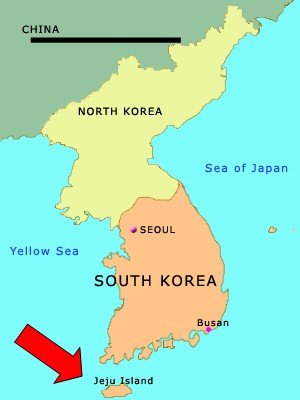
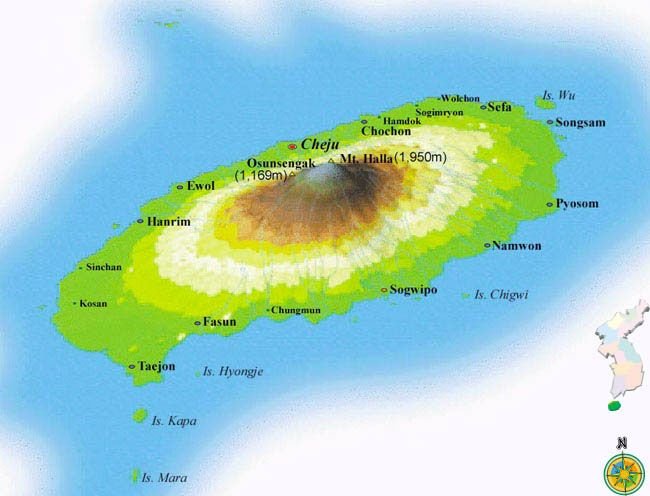
With Gangwha in the Gyeonggi Do province, they are the only two islands were furniture with its own specific design was produced.

The typical Jeju Bandaji is usually taller than it is wide, although this is not a strict rule. Jeju Bandaji can be categorized into early and late forms.
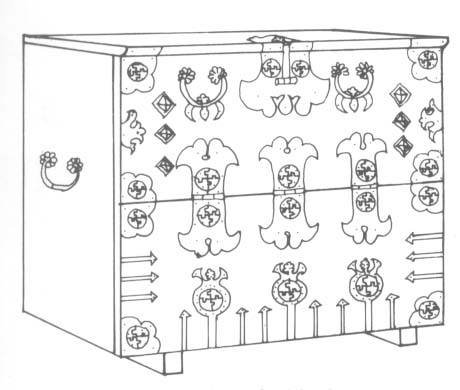
Edward Reynolds Wright, Man Sill Pai.
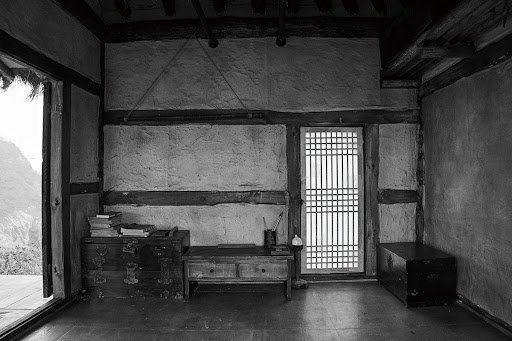
Early pieces (19th century) are smaller in size compared to other Bandaji and feature a limited amount of metalwork. The metalwork tends to be flatter than in later pieces. Due to the island’s location (south of the peninsula with its milder climate) and geomorphology (varied relief in a small area), a wider variety of woods were available and used in furniture construction.

Early to mid 19th century.
H. 58cm, W. 80cm, D. 40,5cm.
Collection Weisman Art Museum, Minneapolis, USA.
Notice the surface of the top which has been roughly processed.
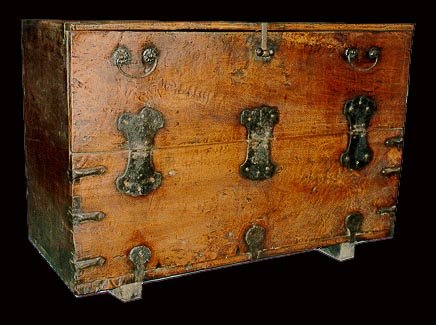
Private collection.
The finest pieces were crafted from zelkova (Dragon wood) or fruit trees like pear or cherry wood, with the latter two not commonly employed in other provinces. These woods were typically used for the front, sides, and top of the chest. On more common pieces, for cost-efficiency, pine wood might be used for constructing the sides, top, and back.

In the 20th century, as production expanded, red pine wood gradually replaced the previously prized woods. Chest sizes and the amount of metal decoration also tended to increase. The wood’s surface was occasionally roughly processed, and there are cases where scars and saw marks remained visible on the wood’s surface.

With a roughly processed surface of the wood

Pear wood, iron fittings, oil finish.
H. 73cm, W. 84cm, D. 44cm.
Late 19th Century. Korea.
This piece is very unusual as it has been made with pear wood solid boards.
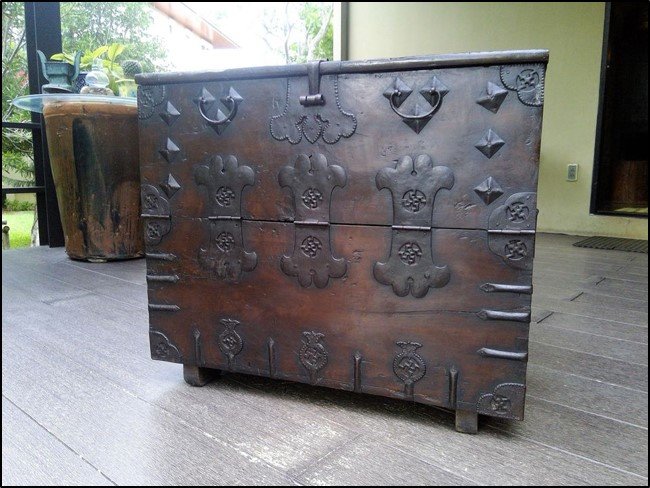
The Jeju bandaji is probably the easiest to recognize among other bandaji. Its metalwork design is unique, very specific to the island and filled with ancient symbolism.
METALWORK DESIGN
The front of the chest features three large and thick cast iron plates shaped like “Bulocho,” clouds shaped hinges, which symbolize longevity and a desire for success. The cloud pattern is also present on the lock plate. Further studies are required here since this shape has also been identified as the chrysanthemum pattern.
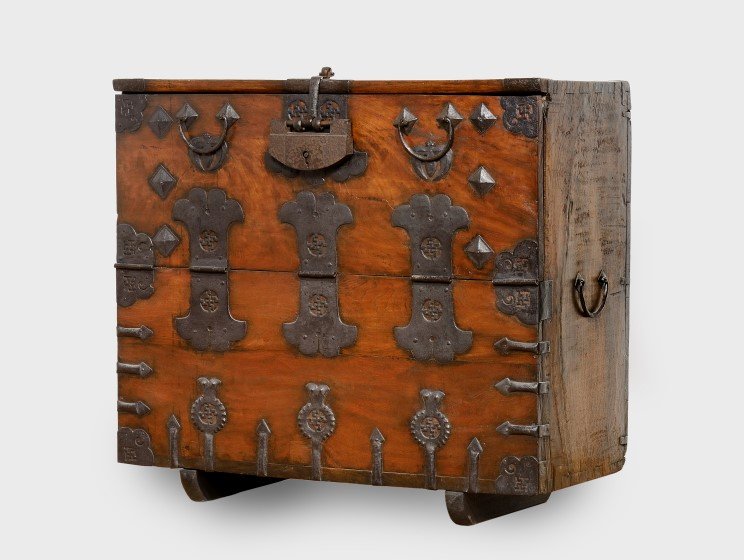
This photo is interesting as it shows the surface of the wood roughly processed.
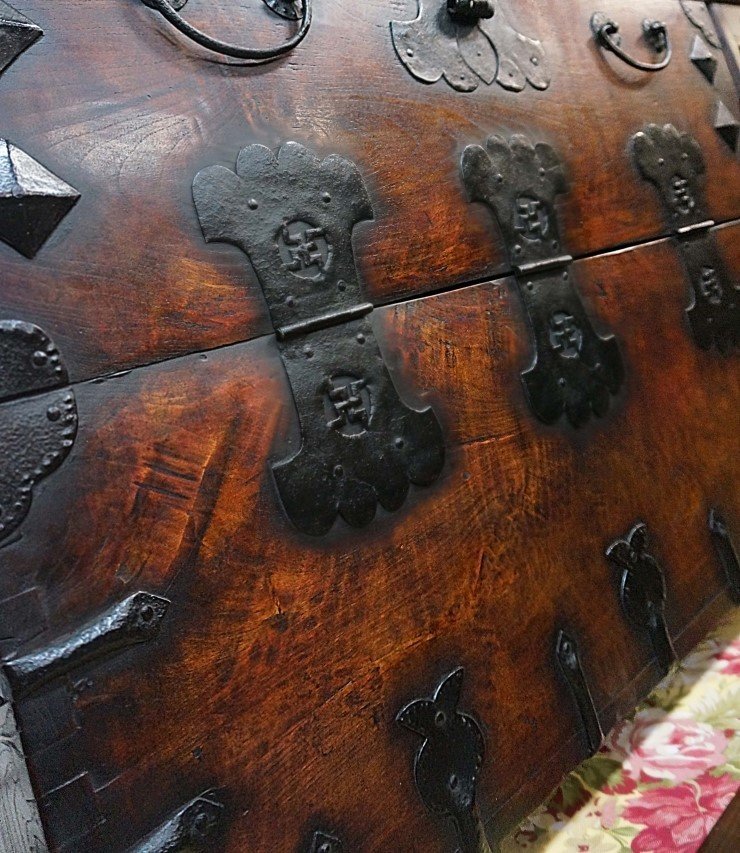
Image courtesy of Korean National Research Institute for Cultural Heritage.
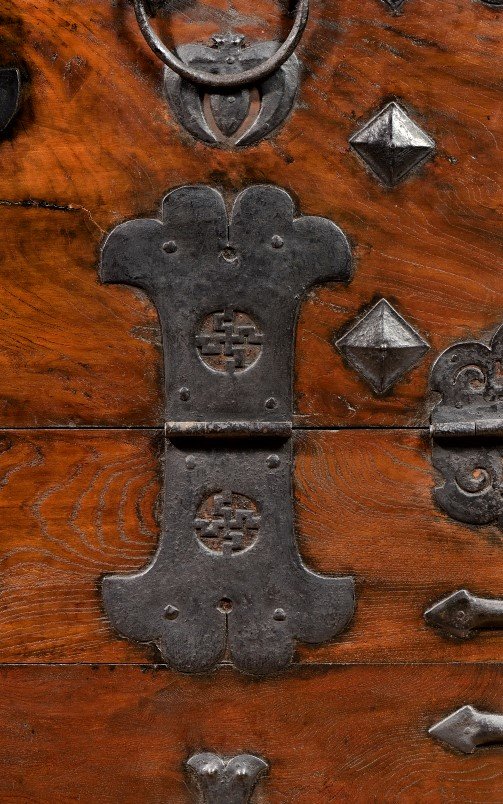
Large hinges, lock plates, and corner mounts are often adorned with swastika symbols. The “Bat” design is frequently used on plates under the front door pullers, symbolizing good luck. They were seen as symbols of furniture protection due to their bright night vision eyes.
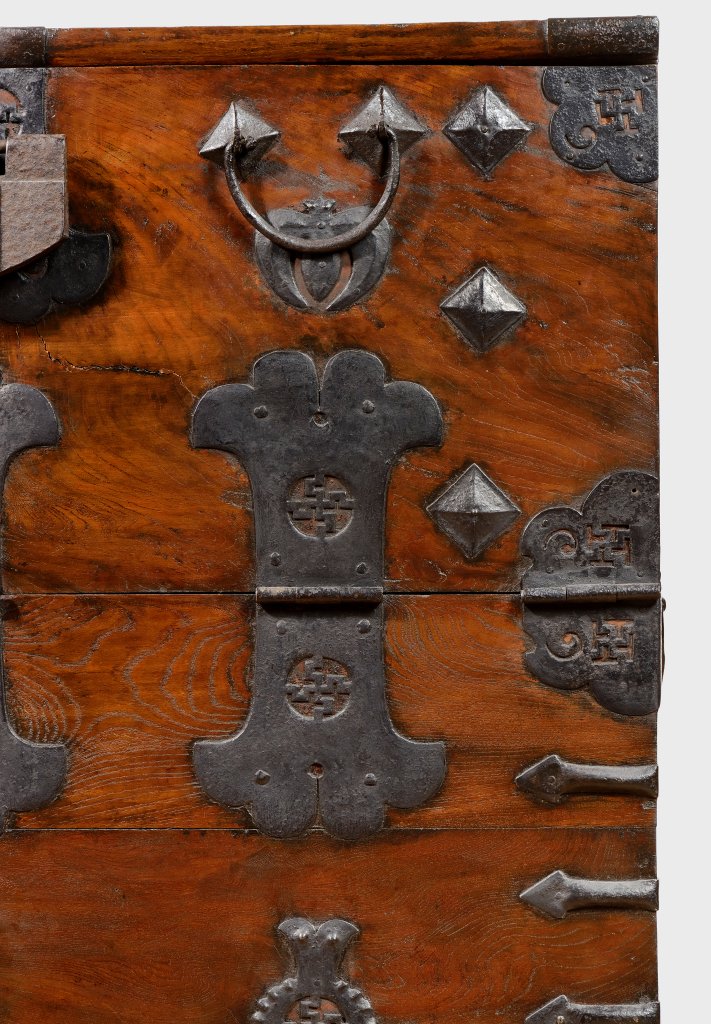
Thick bold decorative square nails a typical feature on Jeju Bandaji. Under puller plate “Bat” design.
Image courtesy of Korean National Research Institute for Cultural Heritage.

Image courtesy of Korean National Research Institute for Cultural Heritage.
The front base joint plates feature a pomegranate pattern with an engraved swastika motif. Pomegranate is typically used to symbolize fertility and abundance. Lastly, please note the thick, prominent “star” nails on the front of the chest, which serve a purely decorative function and are unique to Bandaji from Jeju Island.
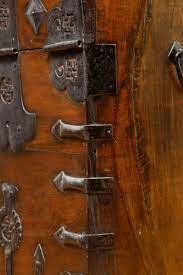
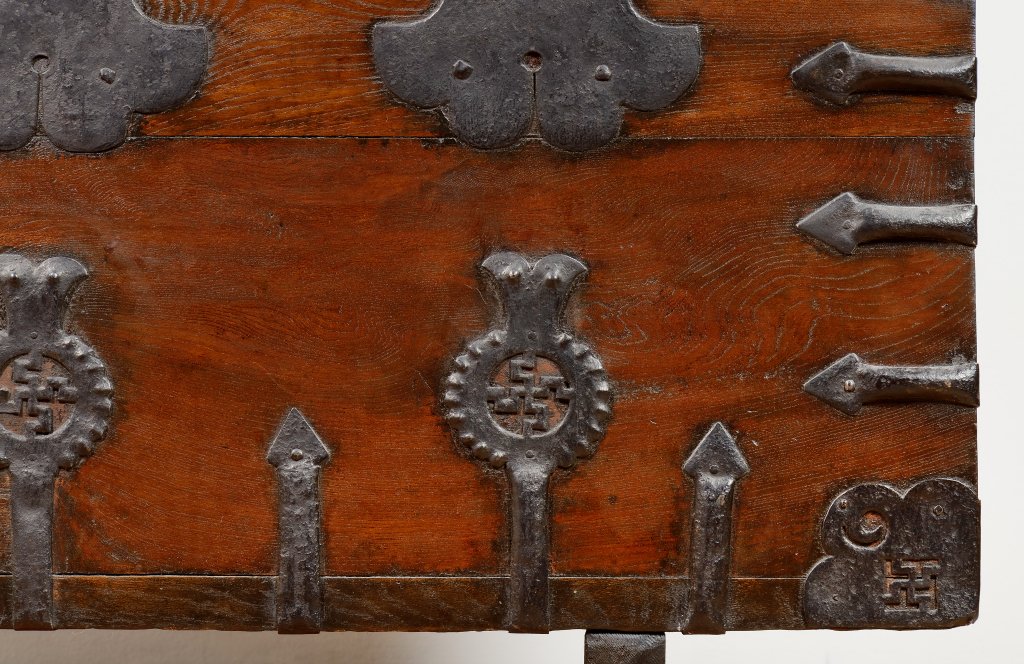
Image courtesy of Korean National Research Institute for Cultural Heritage.


Late 19th century.
H. 48cm, W. 65,5cm, D. 30,3cm.
Collection of the Jeju Craft Museum, Korea.
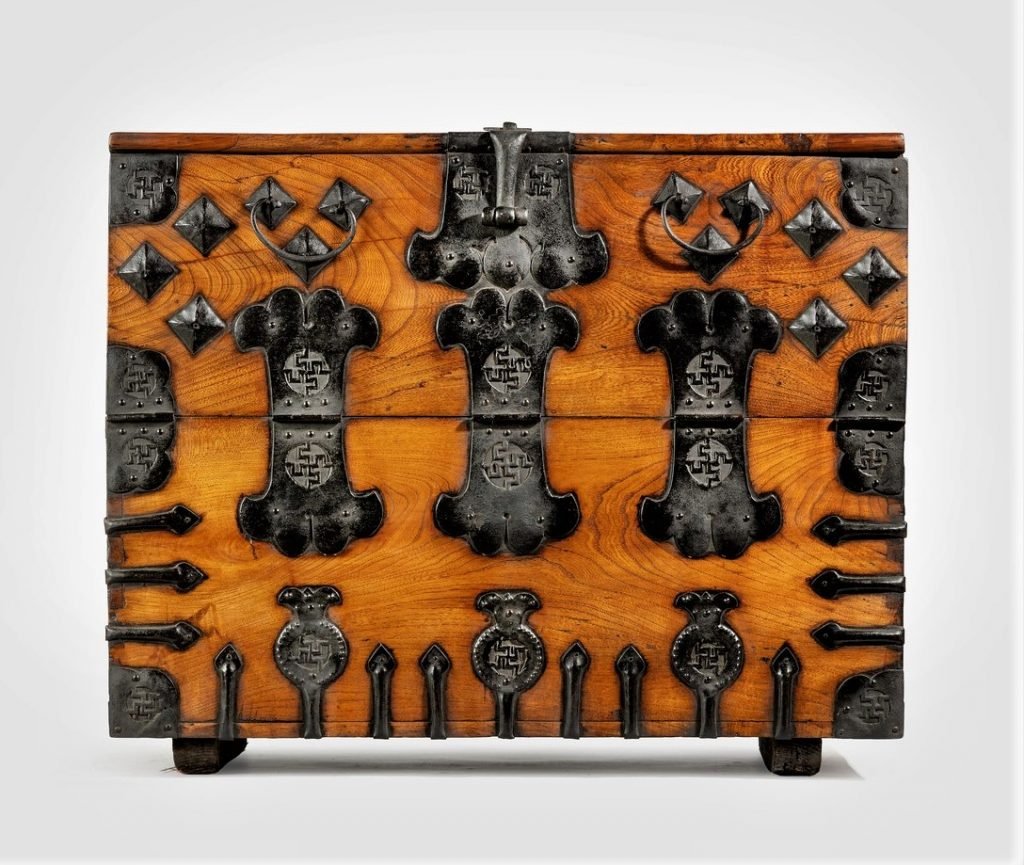
19th – early 20th century
H. 70cm, W. 86cm, D. 44cm.
Collection of the Jeju Craft Museum, Korea.

H. 75cm, W. 90cm, D. 44,5cm.
Jeju Folklore and Natural History Museum

H. 82,5cm, W. 98,5cm, D. 46cm. Japanese colonial period.
Early 20th century.
Jeju Folklore and Natural History Museum

Zelkova wood, iron fittings. Early 20th century. H. 79,4cm, W. 96,2cm, D. 44,8cm.
Collection: Jeju Folklore and Natural History Museum

H. 78,7cm, W. 96,5cmcm, D. 43,2cm. Presented at an auction in the Sates. August 2024.

H. 74cm, W. 92,5cm, D. 42,5cm.
Collection: Jeju Folklore and Natural History Museum

Collection: Jeju Stone Culture Park



APPENDIX:
CHANGHUNG vs JEJU BANDAJI.
Identifying a regional style with certainty can be challenging, as borders are porous, and communities on both sides can reproduce similar designs.
A concrete example pertains to Bandaji styles from JEJU and CHANGHUNG, both located in Jeolla Do province. While we have separated Jeju Do and Jeolla Do areas in our regional differences classification, Jeju Do is part of modern Jeolla Do province.
Bandaji from JEJU and CHANGHUNG exhibit very similar metalwork patterns, with JEJU DO pieces being more ornate, featuring larger plates. However, one interesting detail to note concerns the central “cloud” fittings that secure the opening panel. A slight difference in shape is clearly visible on both the top and bottom of the pattern.
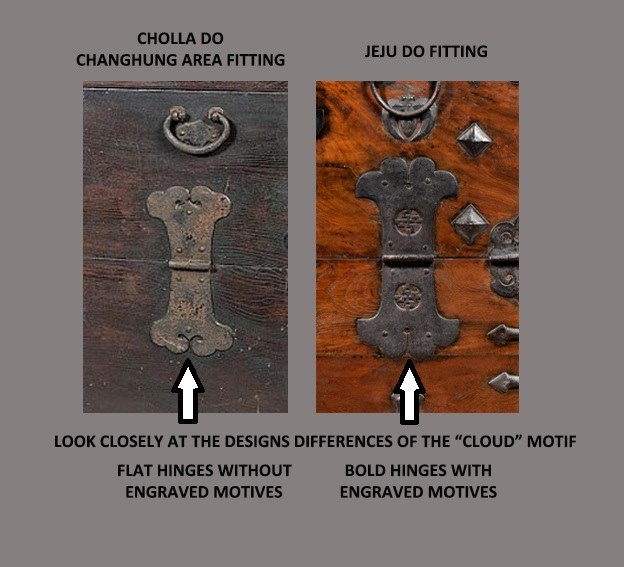
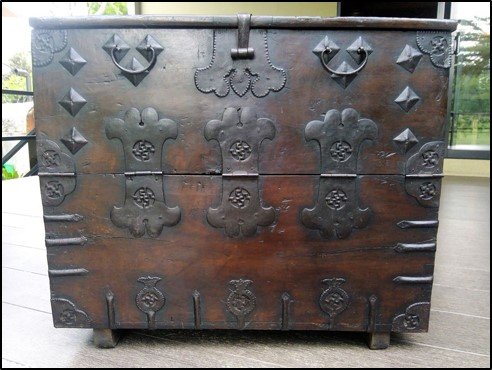
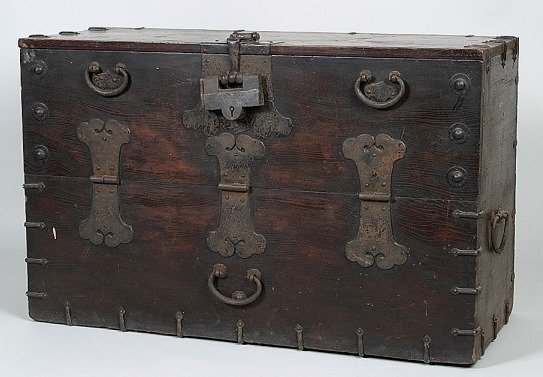

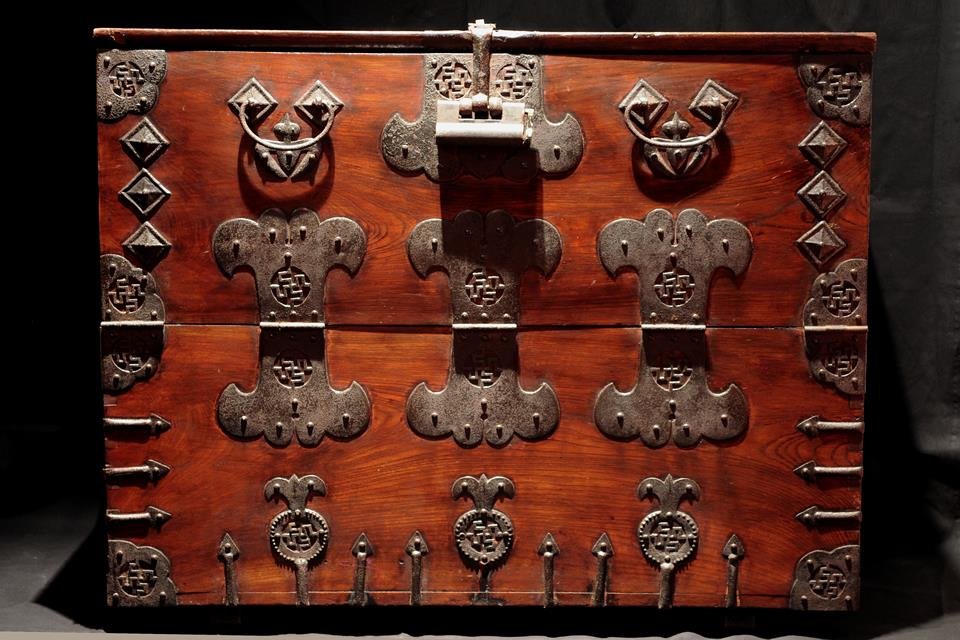
The photos are exquisite. I wish that more detail would be put into the description to give a more cultural and historical perspective, i.e. ‘swastika’. Obviously, this design is not called swastika in Korean but Manja which is more ancient in years and of course, completely unrelated to what is often first associated with ‘swastika’ which are socialist Nazis. Additionally, the motifs of flowers, birds, rocks are relatively unknown to the westerner or others on the meaning apart from they must have enjoyed nature. The flowers are often the mugungwha or rose of sharon which is the national flower of Korea, and the eastern pine which is also known as the Jerusalem pine, and rocks which either symbolize mountains – the majesty of Oori Hannanihm- their oldest religion of One G-d in Heaven who sent Yesu Messiah and/or the scholar rock which has a specific shape, non jagged and smooth. These descriptors would be most fitting in a historical museum but would of course, require historians and art historians of Korea and could be the equivalent of The Smithsonian or other highly acclaimed museums known for scholarship and detail in Korea.